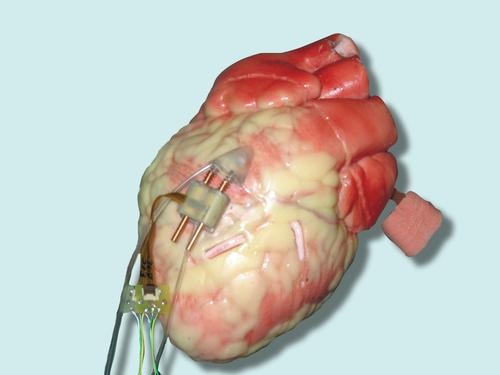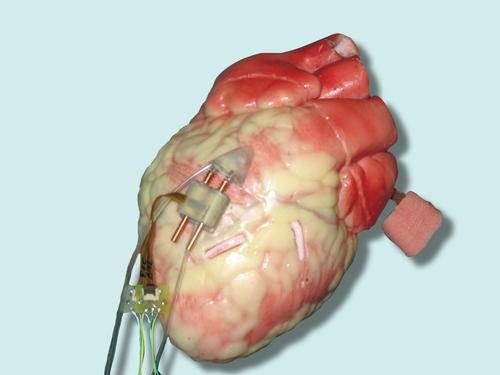HeartLander Surgical Robot Inches Closer to Reality
October 6, 2011

Mobile robots have been designed to travel through water, across rugged outdoor terrains, and even along the surface of glass for automated window cleaning. But can you imagine a robot designed to travel on the surface of a human heart?
Nicholas Patronik, Ph.D., and Peter Allen at the Carnegie Mellon Robotics Institute helped design a robot capable of doing just that. The HeartLander, a miniature robotic device, crawls around the surface of the heart in an inchworm-like fashion, taking measurements and performing simple surgical tasks. This robot addresses two major challenges -- gaining access to the heart without opening the chest and operating on the heart while it is beating.
Several options for tackling these challenges exist today. Thoracoscopic techniques use laparoscopic tools inserted through the chest cavity to operate on the beating heart. Percutaneous transvenous techniques access inner organs through main arteries and veins. For example, a doctor can guide a heart stent through the veins in your thigh to treat blockages, and this procedure is performed on an outpatient basis. These transvenous procedures are easier to recover from, but thoracoscopic techniques offer much more flexibility in the complexity of surgical operations that can be performed.

The HeartLander robot is considered a hybrid of these two approaches in that it can achieve fine control of thoracoscopic techniques while maintaining the ability to be performed on an outpatient basis like the percutaneous transvenous techniques. It adheres to and traverses the heart's surface, the epicardium, providing a tool for precise and stable interaction with the beating heart. Even better, it can access difficult-to-reach locations of the heart, such as the posterior wall of the left ventricle.
The HeartLander is launched on to the surface of the beating heart through a small puncture under the bottom of the sternum. The robot adheres to the epicardial surface of the heart and navigates autonomously to the specified location, traversing the epicardium like an inchworm. It can navigate to any location on the epicardium with speeds of up to 4mm per second and acquire localization targets within 1mm. The HeartLander's mobility is semi-autonomous. It uses a pure pursuit-tracking algorithm to navigate to predetermined surface targets. It can also be controlled via teleoperation.
Several prototypes of the HeartLander system have been completed. One of the first prototypes used a flexible tether with offboard linear motors to actuate the robot forward while solenoids regulated vacuum pressure to suction pads.
The tethered design offloads functional components of the crawler, making it simpler and robust, but a tetherless robot was desired to reduce tether stiffness, thereby increasing turning efficiency. While studying at the University of Pittsburgh, Allen made some of the first steps toward a tetherless robot and designed a robot with onboard motors.
About the Author(s)
You May Also Like





